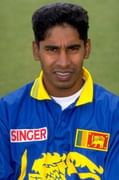Personal Information
| Full Name | Imran Khan Niazi |
| Date of Birth | October 5, 1952 |
| Age | 72 Years |
| Nationality | Pakistan |
| Height | 6 ft 1 in (1.85 m) |
| Current Team(s) | |
| Role | All-rounder, Right-arm fast Bowler, Right handed Batsman |
| Past Team(s) | |
| Family | Bushra Manika (Spouse), Ikramullah Khan Niazi (Father), Shaukat Khanum (Mother), Sulaiman Isa Khan, Qasim Khan (Sons) |
Most Recent Matches
| Match | R | BF | 4s | 6s | S/R | O | R | W | E/R |
|---|---|---|---|---|---|---|---|---|---|
| MAL vs BCC | 3 | 4 | 0 | 0 | 75.00 | 0 | 0 | 0 | 0 |
| MAL vs RMC | 1 | 5 | 0 | 0 | 20.00 | 0 | 0 | 0 | 0 |
| MAL vs BCC | 0 | 0 | 0 | 0 | 0 | 0 | 0 | 0 | 0 |
| MAL vs RMC | 7 | 3 | 0 | 1 | 233.33 | 0 | 0 | 0 | 0 |
| OEI vs PCC | 0 | 1 | 0 | 0 | 0.00 | 0 | 0 | 0 | 0 |
Batting Stats
View All| Game Type | Mat | Inn | R | BF | NO | Avg | S/R | 100s | 50s | H | 4s | 6s | Ct | St |
|---|---|---|---|---|---|---|---|---|---|---|---|---|---|---|
| T20Is | 4 | 3 | 39 | 32 | 1 | 19.50 | 121.87 | 0 | 0 | 36 | 2 | 3 | 0 | 0 |
| T20s | 4 | 3 | 39 | 32 | 1 | 19.50 | 121.87 | 0 | 0 | 36 | 2 | 3 | 0 | 0 |
| T10s | 24 | 22 | 327 | 184 | 2 | 16.35 | 177.72 | 0 | 1 | 67 | 26 | 29 | 8 | 0 |
Bowling Stats
View All| Game Type | Mat | Inn | O | R | W | Avg | E/R | Best | 5w | 10w |
|---|---|---|---|---|---|---|---|---|---|---|
| T20Is | 4 | 1 | 2.0 | 13 | 0 | 0 | 6.50 | 0 | 0 | 0 |
| T20s | 4 | 1 | 2.0 | 13 | 0 | 0 | 6.50 | 0 | 0 | 0 |
| T10s | 24 | 0 | 0 | 0 | 0 | 0 | 0 | 0 | 0 | 0 |
Popular Players
Imran Khan: A Brief Biography
Imran Khan Biography
Imran Khan Niazi is a former first-class cricketer, Pakistani politician who heads the Pakistan Tehreek-e-Insaf.
He was born on 5th October 1952 at Lahore, Punjab and is currently serving as a member of the National Assembly.
He played the role of an All-rounder for the Pakistan National team between 1971 and 1992.
The right-hand batsman is considered to be the best all-rounder just behind Garry Sobers that the sport has ever witnessed.
In 2010, he was inducted into the ICC Cricket Hall of Fame.
Background
Khan made his first-class cricket debut aged sixteen in Lahore. During the early 1970s, he was playing for different Lahore-based smaller teams before making it into the main team in 1970–71.
Khan was part of University of Oxford's Blues Cricket team between 1973 and 1975.
He played county cricket from 1971 to 1976 for Worcestershire, as an average medium-pace bowler.
Debut
He made his Test Debut against England on 3rd June 1971 which ended in a stalemate as failed to take a single wicket across both the innings and scored just 5 runs.
Three years later, he debuted in the ODI format against the same opponents at Trent Bridge for the Prudential Trophy.
He failed to claim a single wicket but had the third best economy in the whole match and finished his 10 overs.
Rise to Glory
After his education from Oxford was finished and fulfilling his tenure at Worcestershire, he came back to Pakistan in 1976 and became a regular in the national team since the 1976–1977 season.
His initial Tests were against the mighty New Zealand and Australian teams.
The series that followed up was the West Indian Series in where Tony Greig signed him up for Kerry Packer's World Series Cricket.
He earned the name as the fastest bowler in the tournament when he bowled at the pace of 139.7 km/h, which was the third fastest ball in that tournament.
During the 1982 season, he played 9 tests and he got 62 wickets at an average of 13.29 which is the lowest average of any bowler in Test history with at least 50 wickets in a year.
He achieved the all-rounder's triple of 300 Test wickets and 3000 Test runs in just his 75th Tests, the second fastest record behind Ian Botham who reached the milestone 3 matches earlier.
Club Career
He initially played for Dawood Industries between 1975 and 1976 and the Pakistan International Airlines between 1975/1976 to 1980/1981.
He then represented the Oxford University, Sussex, and Worcestershire while at his time in England. In the 1984-85 season, he represented the New South Wales of Australia.
Captaincy
At the age of 30, he took over the captaincy from Javed Miandad. He captained his side in 48 test matches in which 14 were won and 8 were lost.
In the 139 ODIs he had captained, he led his team across the finishing line on 77 occasions and losing 57 matches.
In the 1982 home series against India, he took 40 wickets in six Tests at an average of 13.95 but suffered a stress fracture in his shin that kept him out of the team for more than two years.
He made his comeback in the 1984–1985 season. After failing to reach the 1987 World Cup, he retired from International Cricket before returning to the team in 1988.
At the age of 39, he successfully led Pakistan to victory in the 1992 Cricket World Cup and contributed mainly with the bat rather than with the ball throughout the series.
Imran's Record in Numbers
In 1983, he was named as the Wisden Cricketer of the Year.
During the International Cricket Council's centennial year celebration, he was one amongst the fifty-five cricketers inducted into the ICC Hall of Fame.
He even won the Sussex Cricket Society Player of the Year in 1985.
Retirement
In January 1992, he played his last test match for Pakistan when they faced Sri Lanka in the series decider.
He didn’t bowl in both innings and failed with the bat in his last innings. However, Pakistan won the match by 3 wickets and eventually the series.


































































































